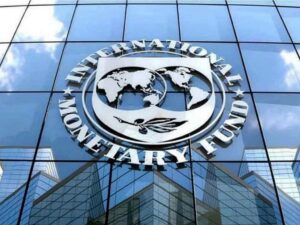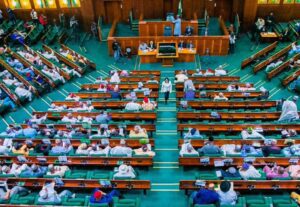


Banks face potential shake-up as new report flags capitalisation concerns
…17 banks at risk with proposed 15-fold capital increase
…Expert calls for incentive-based approach in banking sector reform
By Sodiq Adelakun
A recent report by Ernst and Young has shed light on the potential ramifications of the Central Bank of Nigeria’s (CBN) contemplation of raising the minimum capital requirement for banks.
Titled “Navigating the Horizon: Charting the Course for Banks amid Plans for Recapitalisation,” the report paints a vivid picture of the challenges and opportunities facing Nigeria’s financial institutions.
According to the findings, a staggering 17 out of the 24 existing Deposit Money Banks could find themselves teetering on the edge of viability if the capital requirement is increased by 15-fold, from the current N25 billion mark.
At the helm of this potential transformation is CBN Governor, Olayemi Cardoso, who has articulated the apex bank’s ambition to fortify the banking sector’s capacity to bolster Nigeria’s aspirations of attaining a $1 trillion economy by 2026.
Currently, the capital base varies based on banking license type, with regional, national, and international license holders expected to maintain minimum capital bases of N10 billion, N25 billion, and N50 billion, respectively.
The proposed hike in the capital requirement harkens back to the CBN’s 2004 banking reform, a watershed moment that saw the capital base surge from N2 billion to N25 billion. This historic overhaul spurred a flurry of mergers and acquisitions, culminating in a significant reduction in the number of banks, from 89 to 25.
In recent months, a proactive response has been observed among some banking giants. FBN Holdings, Wema Bank, and Jaiz Bank have all proposed Rights Issues, while Fidelity Bank has announced plans to bolster its capital through a public offer and rights issue.
However, Ernst and Young’s report underscores the nuanced strategies that banks may need to adopt to weather the storm. While financial indicators suggest resilience and stability among Nigerian banks as of 2023, the looming specter of recapitalisation necessitates foresight and adaptability. Various avenues, from mergers and acquisitions to initial public offerings, placements, and retained earnings, are being explored as potential lifelines.
As the industry braces for potential upheaval reminiscent of the early 2000s, one thing remains clear: the Nigerian banking sector is on the precipice of transformation, poised to navigate the turbulent waters ahead with resilience and determination.
The report read partly, “The recent plan by the CBN to increase the capital base of banks could again lead to M&A activities but not as widespread as was the case in 2004/2005 given the relatively solid financial positions of the banks today as well as the occurrence of several M&A activities in the banking sector over the past 10 years.
“While the CBN governor did not indicate the magnitude of the proposed hike in the capital base, we have assumed what the proposed increment will be based on three different scenarios underpinned by current macroeconomic conditions. On the back of that, we were able to determine the number of banks (across the three licence types) that may fall below the new minimum capital thresholds.
“In a worst-case scenario, i.e., given a capital multiplier of 15, about 17 out of 24 banks would not meet the new minimum capital.”
The report noted that the plan to recapitalise banks was premised upon the recent devaluation of the naira in 2023.
It explained that the exchange rate as of 2005 during the last exercise in 2005 stood at N132.9/$ but the naira currently exchange for over N1400/$.
According to the firm, this implies that the recapitalisation may require a capital multiplier of 10 or more based on the exchange rate differentials.
“On this basis, a worst-case scenario given a 15x capital multiplier for 24 banks will be considered based on the type of banking licenses held. We have benchmarked the current capital of these banks against the current capital requirement and four recapitalization scenarios,” it noted.
The Chief Executive Officer of the Centre for the Promotion of Private Enterprise, Dr Muda Yusuf, in an earlier interview with our correspondent, welcomed the move to increase banks’ capital base, adding that the current capital base was grossly inadequate.
He said, “The minimum capital requirements of the banking industry need to be reviewed in the light of the considerable loss of value amid depreciating domestic currency. During the banking consolidation of 2004, the minimum capital requirement for banks was raised from N2bn to N25bn. The revised capital requirement was an equivalent of $187m. Today, the same N25bn is the equivalent of just $32.5m.”
Meanwhile, Professor Uche Uwaleke, a distinguished figure in the field of Capital Market and President of the Association of Capital Market Academics of Nigeria, has advocated for a nuanced approach that prioritises incentivisation over coercion.
Addressing concerns surrounding the potential recapitalisation drive, Professor Uwaleke underscored the importance of fostering a conducive environment for banks to bolster their capital bases.
While acknowledging the necessity of robust capitalisation to fuel ambitious economic goals, such as Nigeria’s aspiration to achieve a $1 trillion economy, he cautioned against replicating the coercive tactics employed during the last recapitalisation exercise in 2005.
In Professor Uwaleke’s view, incentivisation should take precedence over compulsion, offering banks the impetus to proactively enhance their capital reserves. He emphasised that many Deposit Money Banks were already taking proactive steps to fortify their capital bases in anticipation of regulatory changes.
This perspective highlights a shift in approach, advocating for a symbiotic relationship between regulatory imperatives and industry initiatives.



